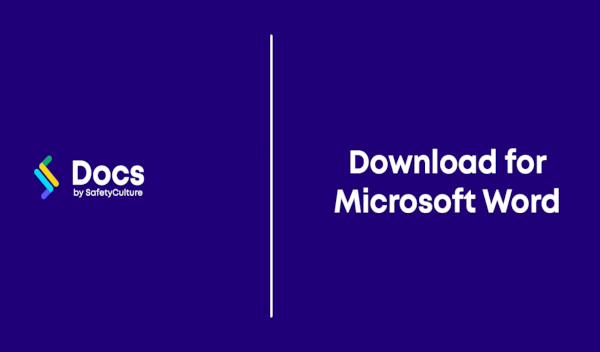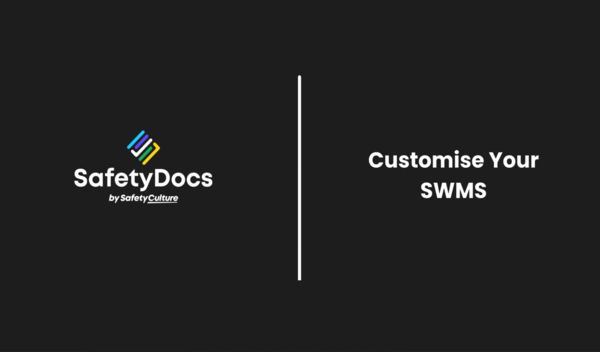Flood Storm Clean-up Safe Work Method Statement
- Instant Document Delivery via Email.
- Add to your existing management system.
- Can assist in ensuring workers are adequately trained.
- Customisation instructions provided.
- Microsoft Word Format (Fully editable).
- Only pay once (no subscriptions required).
Flood Storm Clean-up Safe Work Method Statement
This Flood Storm Clean-up Safe Work Method Statement (SWMS) offers clear guidelines for safely cleaning up premises after floods or storms. It highlights potential hazards and outlines the necessary controls to maintain a safe working environment during the removal of contaminated items and materials.
Job Steps Covered in Flood Storm Clean-up SWMS
- Site Preparation: Identifies emergency contacts so the site is safe to enter.
- Check Weather Conditions & Prepare: Addresses weather conditions and environmental hazards.
- Arrival On-site & Assess On-site Conditions: Involves initial site assessment and hazard identification.
- Work Area Set-up: Establishes safe work zones and exclusion areas.
- Generator Set-up & Use: Covers safe operation and placement of generators.
- Environment: Focuses on minimising environmental impact during clean-up.
- Housekeeping: Helps to ensure ongoing cleanliness and safety of the work area.
- Manual Tasks: Addresses risks associated with manual handling and ergonomics.
- Working with Powered & Non-powered Tools: Outlines safe use of tools and equipment.
- Working at Height on Ladders, Trestles & Falls into Openings: Details precautions for working at height.
- Removal of Furniture, Household Items including Fitted Cabinets, Mud & Floor Covering: Covers safe removal practices to avoid contamination and injury.
- Insulation Removal: Focuses on the safe removal of insulation, particularly in ceiling spaces.
- Clean & Disinfect Every Surface: Details cleaning and disinfection protocols for a safe environment post-clean-up.
- Waste Management (powered mobile plant): Outlines safe waste management practices using powered mobile plants.
- Fuelling On-site: Addresses safe refuelling practices to prevent fires and exposure to harmful substances.
- On Completion: The site is secure and all equipment is safely decommissioned.
- Emergency Response: Prepares workers for potential emergencies and outlines response control measures.
Each purchase of our SWMS comes with a complimentary copy of the Legislation & Codes of Practice Reference List, valued at $19.95. This valuable resource provides an up-to-date overview of relevant laws and standards, further supporting your compliance efforts.
Key Features of the SWMS
- Regulatory Compliance: Adherence to Australian legislation for workplace safety.
- Hazard Management: Comprehensive identification and control of potential hazards associated with flood and storm clean-up.
- Emergency Response: Detailed emergency response to manage incidents effectively.
- Environmental Consideration: Emphasises practices to minimise environmental impact during clean-up operations.
Who is it Suitable For?
This document is essential for businesses and contractors involved in post-disaster recovery, specifically those tasked with the clean-up of premises following floods or storms. It is also valuable for safety officers and site supervisors overseeing such operations.
Ensure your team is prepared and protected during flood and storm clean-up operations with our comprehensive Safe Work Method Statement. This essential document not only helps you comply with legal obligations but also provides a clear framework for identifying hazards, implementing control measures, and a safe work environment.
- Instant Document Delivery via Email.
- Add to your existing management system.
- Can assist in ensuring workers are adequately trained.
- Customisation instructions provided.
- Microsoft Word Format (Fully editable).
- Only pay once (no subscriptions required).
Flood Storm Clean-up Safe Work Method Statement
This Flood Storm Clean-up Safe Work Method Statement (SWMS) offers clear guidelines for safely cleaning up premises after floods or storms. It highlights potential hazards and outlines the necessary controls to maintain a safe working environment during the removal of contaminated items and materials.
Job Steps Covered in Flood Storm Clean-up SWMS
- Site Preparation: Identifies emergency contacts so the site is safe to enter.
- Check Weather Conditions & Prepare: Addresses weather conditions and environmental hazards.
- Arrival On-site & Assess On-site Conditions: Involves initial site assessment and hazard identification.
- Work Area Set-up: Establishes safe work zones and exclusion areas.
- Generator Set-up & Use: Covers safe operation and placement of generators.
- Environment: Focuses on minimising environmental impact during clean-up.
- Housekeeping: Helps to ensure ongoing cleanliness and safety of the work area.
- Manual Tasks: Addresses risks associated with manual handling and ergonomics.
- Working with Powered & Non-powered Tools: Outlines safe use of tools and equipment.
- Working at Height on Ladders, Trestles & Falls into Openings: Details precautions for working at height.
- Removal of Furniture, Household Items including Fitted Cabinets, Mud & Floor Covering: Covers safe removal practices to avoid contamination and injury.
- Insulation Removal: Focuses on the safe removal of insulation, particularly in ceiling spaces.
- Clean & Disinfect Every Surface: Details cleaning and disinfection protocols for a safe environment post-clean-up.
- Waste Management (powered mobile plant): Outlines safe waste management practices using powered mobile plants.
- Fuelling On-site: Addresses safe refuelling practices to prevent fires and exposure to harmful substances.
- On Completion: The site is secure and all equipment is safely decommissioned.
- Emergency Response: Prepares workers for potential emergencies and outlines response control measures.
Each purchase of our SWMS comes with a complimentary copy of the Legislation & Codes of Practice Reference List, valued at $19.95. This valuable resource provides an up-to-date overview of relevant laws and standards, further supporting your compliance efforts.
Key Features of the SWMS
- Regulatory Compliance: Adherence to Australian legislation for workplace safety.
- Hazard Management: Comprehensive identification and control of potential hazards associated with flood and storm clean-up.
- Emergency Response: Detailed emergency response to manage incidents effectively.
- Environmental Consideration: Emphasises practices to minimise environmental impact during clean-up operations.
Who is it Suitable For?
This document is essential for businesses and contractors involved in post-disaster recovery, specifically those tasked with the clean-up of premises following floods or storms. It is also valuable for safety officers and site supervisors overseeing such operations.
Ensure your team is prepared and protected during flood and storm clean-up operations with our comprehensive Safe Work Method Statement. This essential document not only helps you comply with legal obligations but also provides a clear framework for identifying hazards, implementing control measures, and a safe work environment.


